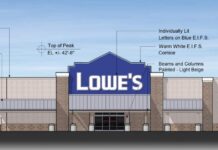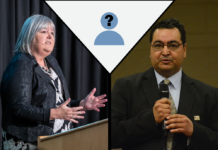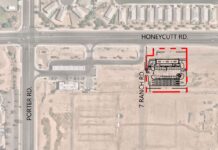“We are going to run into some problems in the future.”
Maricopa Development Services Director Martin Scribner was talking to the Planning & Zoning Commission last month after a presentation on development patterns. The report by planner Ryan Wozniak, “Maricopa: The Living Experiment,” red-flagged problems in land-use productivity and heavy reliance on vehicles.
“Residents spend 61 percent on housing and transportation,” Wozniak said. “That’s higher than the rest of the county.”
He said explosive growth comes with explosive cost. “There is nothing magical about infrastructure.”
With streets currently “too wide” to create pedestrian-friendly business areas and ongoing development sprawl across several acres, Maricopa may need course correction, Wozniak said. “The more you accommodate vehicles, the more you spread out,” Wozniak said. “The less you accommodate, the more people are accepting.”
Without a lot of Arizona examples to help guide Maricopa’s development plan, “We’re trying to identify the crack when it’s been broken,” he said.
In a later interview, City Manager Rick Horst gave an example. “A developer comes in, he builds a new subdivision, he turns over roads to us. In governmental accounting, we call that an asset. Anywhere else it would be called a liability because it just has future dollars tied to it. But we have to have roads. The question is, ‘How do we best utilize our assets, our infrastructure, to capitalize and serve the people the best?’”
Commissioner Michael Sharpe said that was one of the frustrations of Maricopa’s current development model. “We’re just a bedroom community designed around the automobile. It’s going to be tough to course-correct aggressively.”
Horst had encouraged Wozniak’s initiative in gathering the information and asked him to present the information to city departments.
The report showed potential property tax per acre on the same size property developed differently.
1-story residential $4,007
2-story mixed use $32,542
3-story mixed use $44,775
“For instance,” Horst said, “you can have a mile of road that services 100,000 square feet of retail, which brings in a lot of revenue to the city to support Public Safety, Parks & Rec and all those things. Or it can support 100 acres of forest that’s in a nonprofit reserve, for which you get nothing. Is a road too wide when it should be more narrow? Is it a road to nowhere? We have to begin to think about that.”
The research also highlighted long-term development successes in other cities in other areas, from Louisiana to Italy. Wozniak said their experience showed “small interventions add up to different results.”
Horst said current housing stock does not meet the circle-of-life needs of everyone in the city. “We kind of have one level of housing stock. What about the seniors when the kids leave home and they’re empty nesters? What about when one spouse passes? We don’t have apartments; we don’t have more affordable work-force housing, which is our school teachers, the police officers, the firefighters. Those are all the things we need to think about to be a well-rounded, purposeful city.”
The decision to change course or not could have “political ramifications long-term for some,” Scribner said, indicating a future impact on the city council and P&Z.
“It will take an attitude shift across the board.”
This story appears in the October issue of InMaricopa.


![Elena Trails releases home renderings An image of one of 56 elevation renderings submitted to Maricopa's planning department for the Elena Trails subdivison. The developer plans to construct 14 different floor plans, with four elevation styles per plan. [City of Maricopa]](https://www.inmaricopa.com/wp-content/uploads/2024/04/city-041724-elena-trails-rendering-218x150.jpg)
![Affordable apartments planned near ‘Restaurant Row’ A blue square highlights the area of the proposed affordable housing development and "Restaurant Row" sitting south of city hall and the Maricopa Police Department. Preliminary architectural drawings were not yet available. [City of Maricopa]](https://www.inmaricopa.com/wp-content/uploads/2024/04/041724-affordable-housing-project-restaurant-row-218x150.jpg)

![City looks to lower property taxes again City Manager Ben Bitter speaks during a Chamber of Commerce event at Global Water Resources on April 11, 2024. Bitter discussed the current state of economic development in Maricopa, as well as hinting at lowering property tax rates again. [Monica D. Spencer]](https://www.inmaricopa.com/wp-content/uploads/2024/04/spencer-041124-ben-bitter-chamber-property-taxes-web-218x150.jpg)











![Shred-A-Thon to take place tomorrow An image of shredded paper. [Pixabay]](https://www.inmaricopa.com/wp-content/uploads/2024/03/shredded-paper-168650_1280-100x70.jpg)
